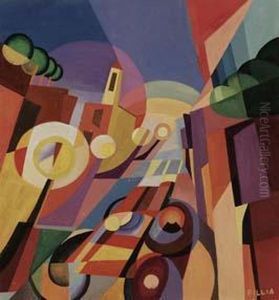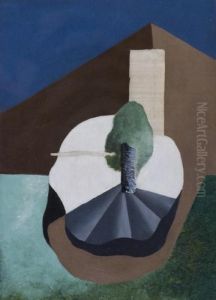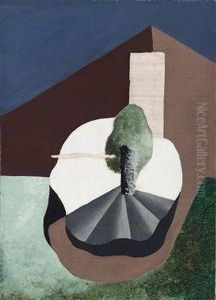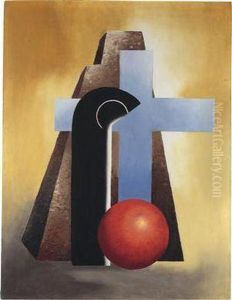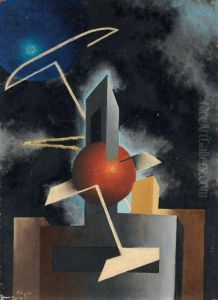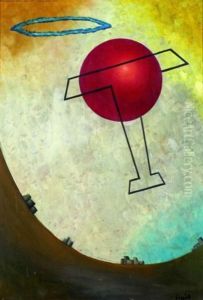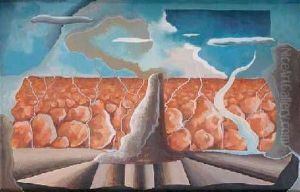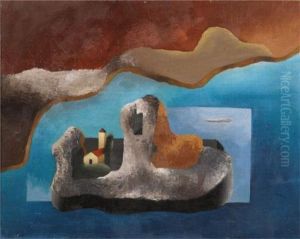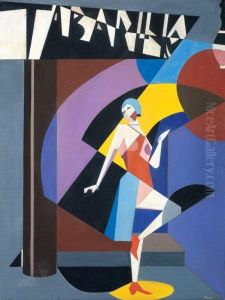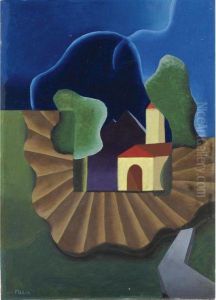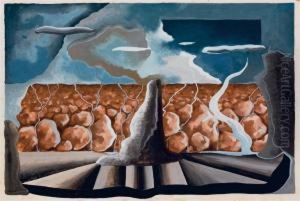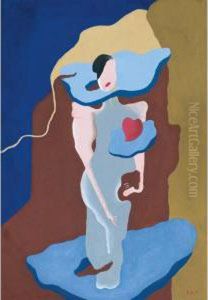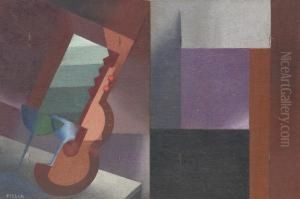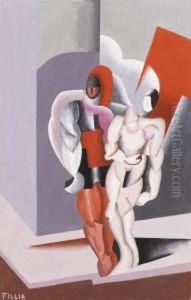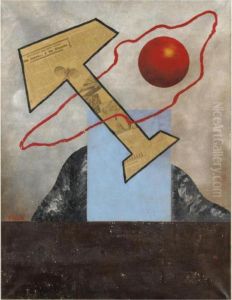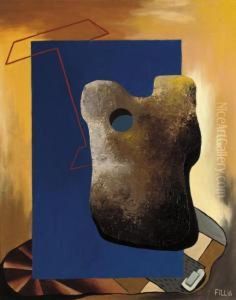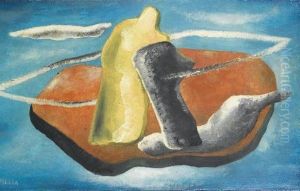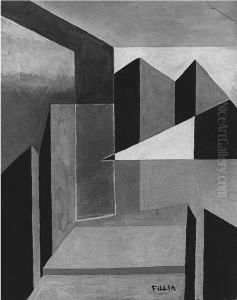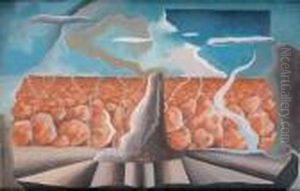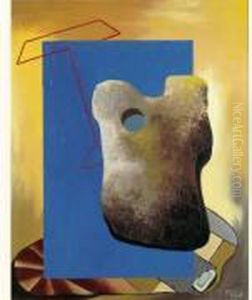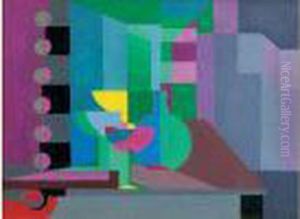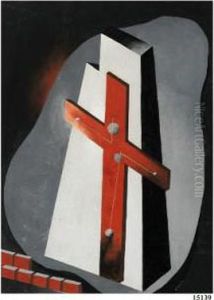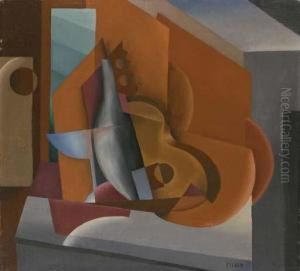Luigi Fillia Paintings
Luigi Fillia, born Luigi Colombo, was an Italian artist known for his central role in the Futurist movement. Born in La Spezia, Italy, in 1904, Fillia was a painter, poet, and theoretician who adopted a pseudonym that reflected his commitment to the ideals of Futurism, a movement emphasizing speed, technology, youth, and violence as means of escaping the past.
Fillia became associated with the Futurists in the early 1920s, and he was particularly influenced by Filippo Tommaso Marinetti, the founder of Futurism, and other leading figures such as Giacomo Balla and Fortunato Depero. His work encompassed a variety of disciplines including painting, stage design, and graphic design. Fillia's artistic output was characterized by dynamic compositions, bold colors, and a celebration of modernity.
In addition to his artistic work, Fillia was also an active organizer of Futurist events and exhibitions. He collaborated with other Futurists on the production of manifestos and contributed to the movement's literature, advocating for a fusion of art and life. His writings often dealt with the role of the artist in society and the potential of art to transform the modern experience.
Despite his contributions to the movement, Luigi Fillia's career was cut short by his untimely death in 1936 at the age of 32. His legacy, however, has been preserved through his influential writings and the striking visual work that captured the spirit of an era fixated on the future. Although not as widely known as some of his contemporaries, Fillia remains a significant figure in the history of the Italian avant-garde and the broader narrative of early 20th-century art.
